Isola del Liri in Ciociaria is a jewel you should visit at least once in your life. During a three-day minitour, we will learn about its fairy tales and horror stories.
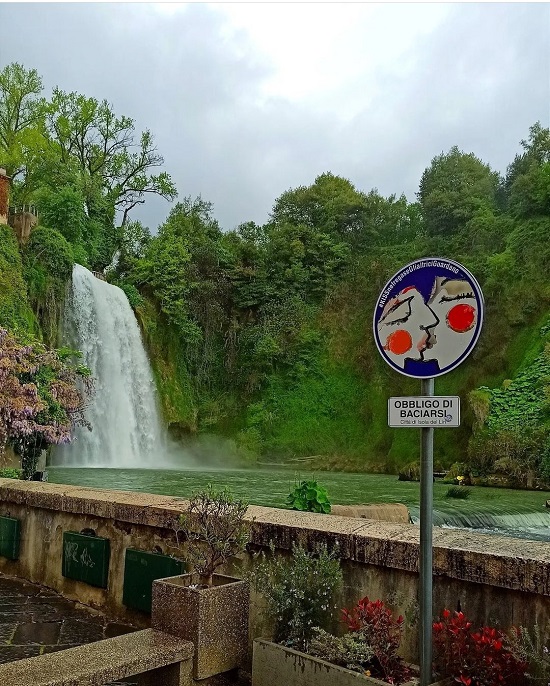
Isola del Liri Ig @namelessess
The beautiful historic centre of the village was founded in medieval times at the foot of the Cascata Grande, the 27-metre fascinating waterfall, which makes even the hard-hearted fall in love and exchange an unforgettable kiss, with the burg in the background, to be posted on social media (#KissnefregaseGlialtriciGuardano). The cascade, the only one in Italy located inside a village, was ranked second among the ten Italian natural wonders by the search engine Skyscanner.
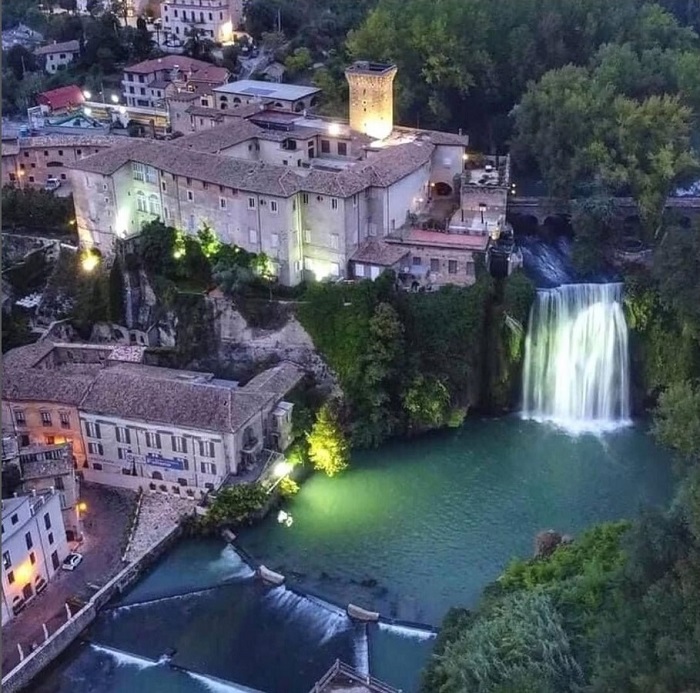
Isola del Liri Ig @discover.ciociaria
Let us start with a visit to the Boncompagni Viscogliosi Castle, accessible through a medieval bridge. The Fortress guards the Sora plain, which makes the Liri River fork and form two sparkling cataracts. In the year 1000, it was inhabited by the Della Rovere, and then by the Boncompagni Family, but only in 1600 was it converted into a noble residence by Costanza Sforza. She enriched the mansion with frescoes depicting biblical subjects and eighteen stucco high reliefs representing the municipalities in the Ducato di Sora in the “Salone dei diciotto paesi”, as well as several statues portraying the virtues of a good prince, and a magnificent Italian garden with a Chapel dedicated to the Madonna delle Grazie.
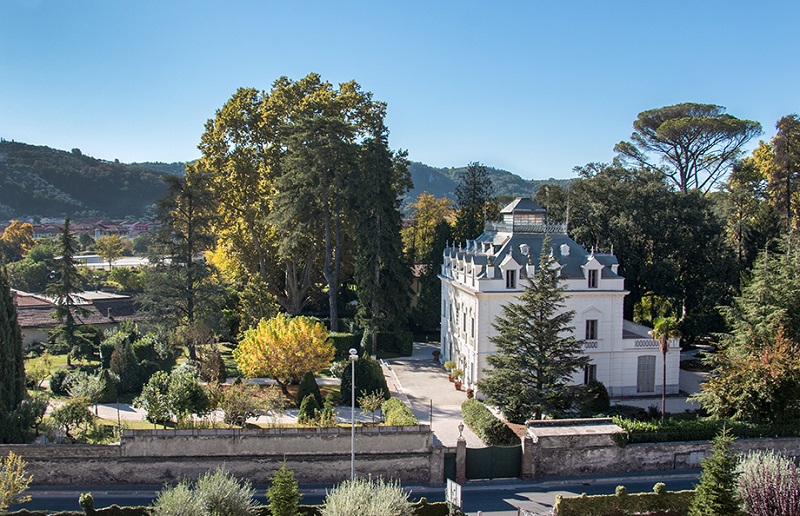
Villa Nota Pisani photo www.prolocoisolaliri.it
Continuing our tour, we reach Villa Nota – Pisani, or Villa Lefebvre. commissioned to French artists by the Lefebvres, the noble family who, in 1816, founded the paper mill of the same name, which enhanced the economy of the village. The family lived in the eclectic style Villa until the beginning of the twentieth century.
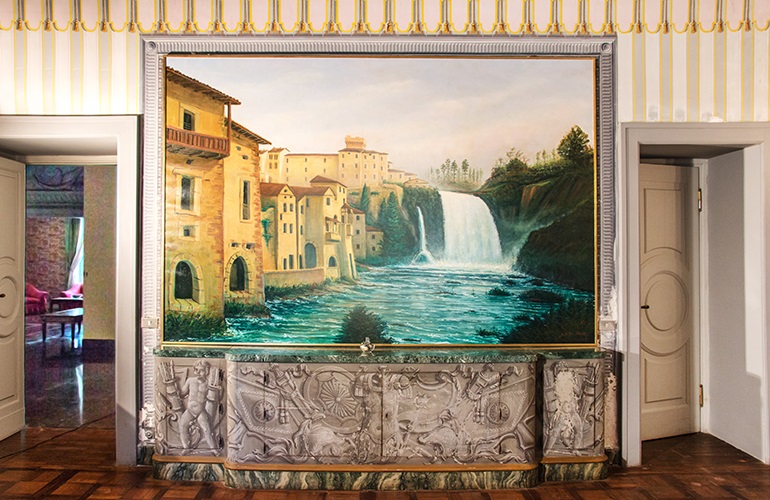
Villa Nota Pisani photo www.prolocoisolaliri.it
The interior is decorated with frescoes, trompe l’oeil paintings and wallpaper, caressed by the light filtering through the Belle Époque windows. Outside, in the shade of pointed roofs, dormers, steeples and pinnacles, we can take a stroll in the large park, along romantic avenues, impressive fountains and centuries-old tall trees. In the early twentieth century, the Villa was purchased by Cavalier Antonio Pisani, and then inherited by the Nota Family. Today it is included in the “List of the Historic Homes of Lazio” and visitable by guided tour.
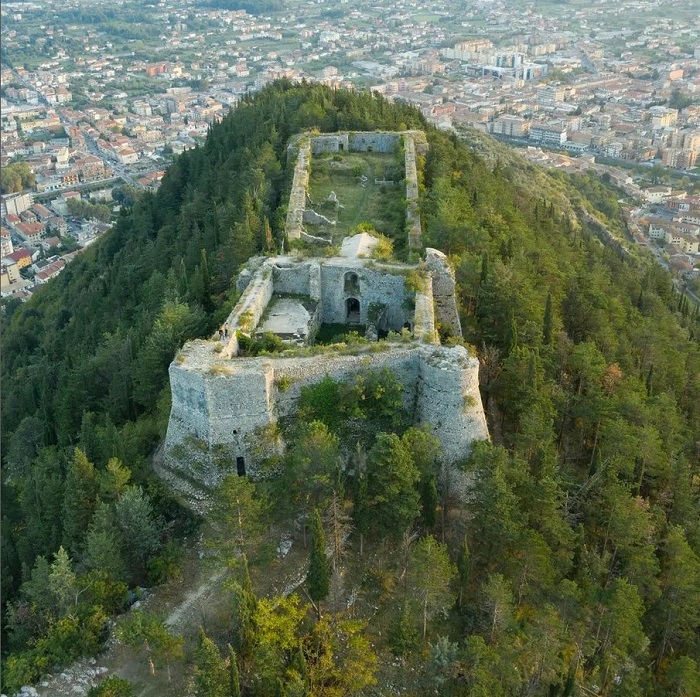
Rocca Sorella Ig @near_rome
Less than ten km away lies Sora, and, on Mount San Casto, the ruins of the Castello di San Casto e Cassio, or Rocca Sorella, from the sixth century BC, an unmissable destination for trekkers. This Fortress, built in defence of the Kingdom of Naples, was first dominated by the Volsces, then by the Romans and the Longobards. In 1520, it became a noble residence, owned by prestigious families, such as the Cantelmo, Della Rovere, Boncompagni and Borgia. The remains of the Castle can be reached on foot from the Canceglie district in Sora, walking up the rocky ridge of Mount San Casto. From there, an amazing view of the Liri Valley can be admired. Past the polygonal walls and the pointed arch door, we come across the bastions and the hexagonal tower.

Castello di Fumone Fb @castellodifumoneofficial
A visit to the heavenly but creepy Castle of Fumone, just over 40 km away from Sora, is not to be missed. Built in the nineth century between the Ernici and Lepini Mountain Chains, it has belonged since the end of the sixteenth century to the Longhi De Paolis Marquises.
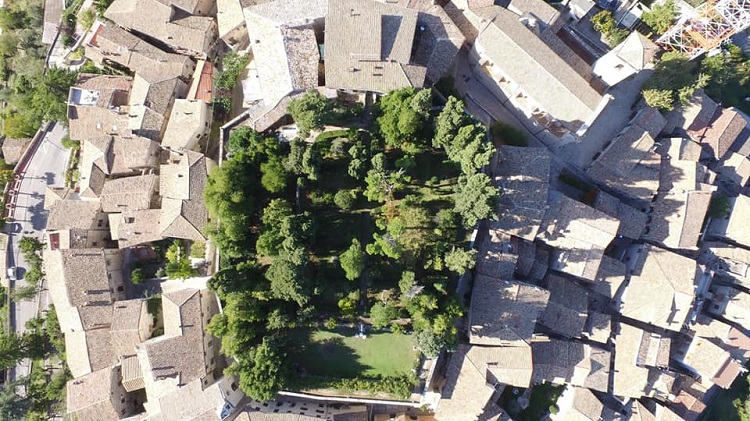
hanging garden Fb @castellodifumoneofficial
At an altitude of 800 metres, over a 3500 sq m. area surrounded by centuries-old trees, lies the highest hanging garden in Europe! From this wonderful Italian garden, the view stretches out over the entire Ciociaria as far as the City of Rome. In case of invasion, a column of smoke was released from the impenetrable Fortress, a signal repeated from village to village, until it reached Rome. Hence the proverb “Quando Fumone fuma tutta la campagna trema” (When Fumone smokes, trembles the whole countryside).
Celestine V, the Pope among Dante Alighieri’s half-hearted souls, who gave up the papal throne, was imprisoned and died in the Castle. The guided tour will include a visit to the prison and the Sanctuary of Celestine V, the small chapel erected by the Longhi Family in his honour. The Halls of the Coats of Arms and the one of the Ancestors, displaying ancient portraits and ornaments of the Longhi De Paolis Family, will also be shown.
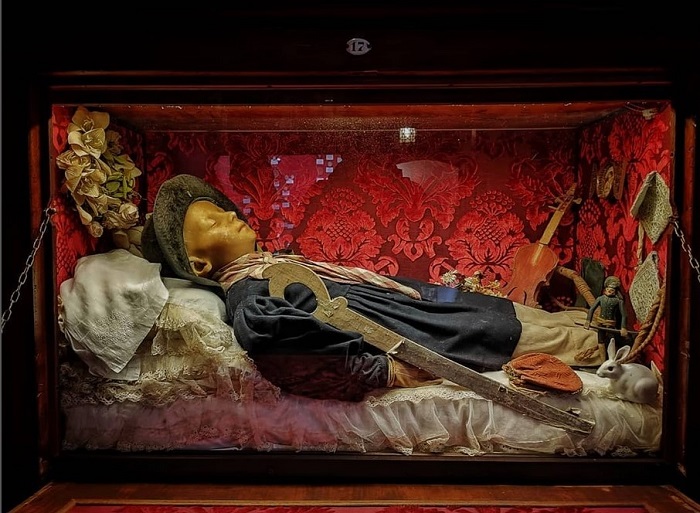
Fumone Castle Ig @castellodifumoneofficial
In the Archives of the Castle, a glass urn preserves the disturbing embalmed body of the five-year-old Marquis Francesco Longhi Caetani, whose obscure death inspired a macabre legend. His mother, the Marquise Emilia Caetani Longhi, loved her only male son so much, that her seven daughters were jealous of him and did not want to give up the inheritance in favour of their younger brother. Did the noble child die of disease or maybe not? However, it is certain that the desperate Emilia had her son embalmed and put in a glass urn, elegantly dressed and surrounded by his favourite toys.
The noble floor of the Fortress holds an even more gruesome story, the Pozzo delle Vergini. The feudal lord had the first right to the brides’ virginity, but those found impure he threw into the Well, a terrifying custom.
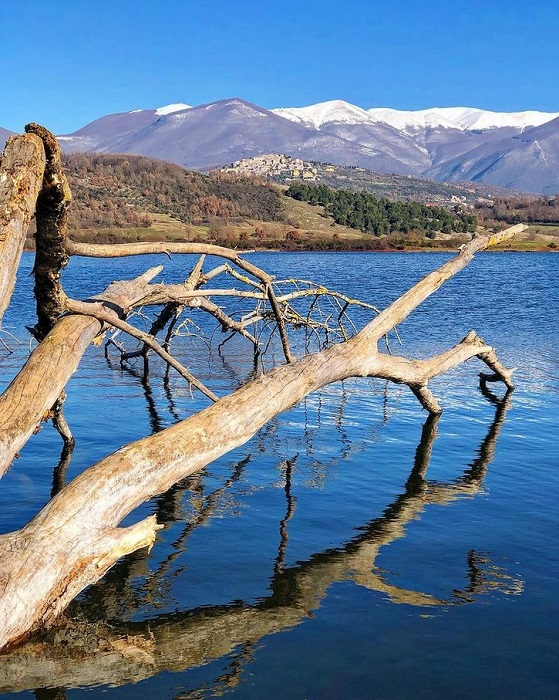
Lake Canterno Ig @cla_green
Finally, we reach the lago di Canterno, the ghost lake, encircled by the towns of Fumone, Ferentino, Fiuggi and Trivigliano. In 1800, a sinkhole in this marshy territory was clogged by debris, and the waters flew downwards creating a new lake. The alternate piling up and dissolving of the debris make the lake appear and disappear just like a ghost, and, forty metres from the coast in front of Fiuggi, a creepy tree trunk emerges from the waters.
